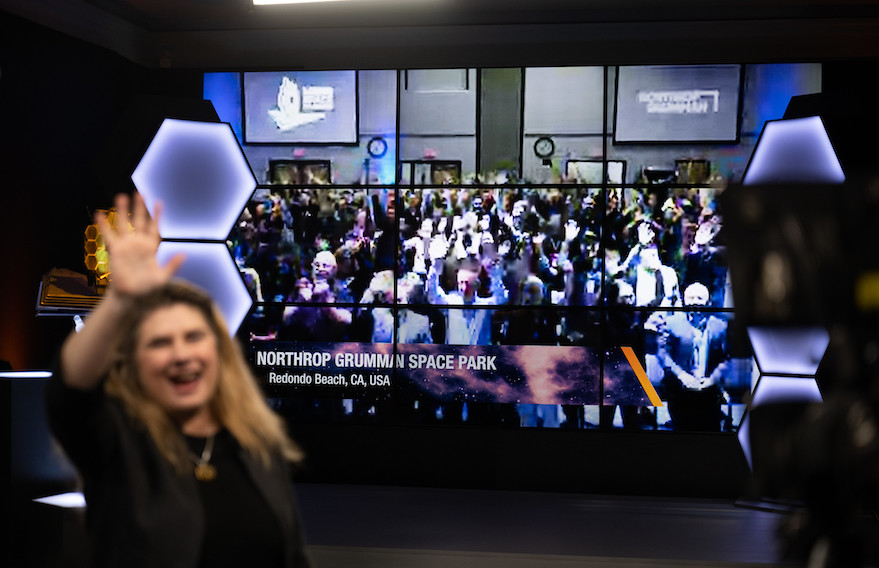Products You May Like
On July 12, NASA, along with ESA and the Canadian Space Agency, will release the first observations from the James Webb Space Telescope in an event at the Goddard Space Flight Center. These will not, strictly speaking, be the first images from JWST: NASA has released engineering images for months to illustrate its progress commissioning the telescope. These observations, though, are intended to demonstrate JWST’s full range of capabilities.
The Space Telescope Science Institute, which operates JWST as well as Hubble, has kept secret what will be included in those observations. However, during a June 29 briefing at the institute’s Baltimore headquarters, NASA leadership couldn’t resist teasing what would be included. For example, NASA Administrator Bill Nelson said one of the images will be the deepest view of the universe ever, beating out similar “deep field” images from Hubble.
They and others have gotten a sneak preview of what will be unveiled on July 12 and are not just impressed but emotional about it. “What I have seen just moved me, as a scientist, as an engineer and as a human being,” said Pam Melroy, NASA deputy administrator.
Engineers, meanwhile, are excited and moved by just how well JWST has performed in space. Leading up to the launch last December, they had warned about all the deployments the spacecraft needed to perform and all the potential single-point failures that could cause those deployments to go wrong.
Yet, everything went smoothly, and NASA ended up with a telescope performing better than expected: sharper images, less jitter and enough fuel to operate for 20 years, twice as long as planned. “It has been an amazing six months,” said Bill Ochs, NASA JWST project manager. He said he felt “100% confident” before the launch, but “if you had asked me would it go 100% smoothly, that’s a different question.”
The technical achievements of deploying JWST and the anticipation about its first images have overcome what JWST had been known for: billions of dollars in cost overruns and years of schedule delays. Those problems caused JWST to run roughshod over other parts of NASA’s science portfolio and, at times, threatened the mission with cancellation.
The only time that came up at the briefing, though, was when Nelson, a former senator, thanked a former colleague, Barbara Mikulski, for saving JWST. “She was able to come to the rescue,” he recalled, from her position on the appropriations committee. “So let’s give credit where credit is due.”
It’s tempting to conclude that all’s well that ends well, but NASA — not to mention the White House and Capitol Hill — knows better. Even as JWST begins science observations, astronomers are looking ahead to future large space telescopes, such as those outlined in the decadal survey published last November. NASA, though, needs to demonstrate it can do a better job managing big science missions if Congress is ever going to commit billions to build them.
The test case for that is NASA’s next flagship astrophysics mission, the Nancy Grace Roman Space Telescope. It’s smaller and less expensive than JWST, but important both from science and project management perspectives.
“Unless NASA can show that we learned lessons from the mistakes that were made in the management of the James Webb Space Telescope,” said Paul Hertz, director of NASA’s astrophysics division, at a meeting of the American Astronomical Society in June, “no one will take us seriously.”
“Number one on the priority list is to make sure that the Roman Space Telescope is delivered within our cost and schedule commitments,” he said. “Nothing less than the future of astrophysics depends on that.” So far, Roman has stayed on track, with only unavoidable and relatively minor delays caused by the pandemic and supply chain difficulties.
So when NASA celebrates the present and future of JWST on July 12 with the release of the first science observations that show its potential to revolutionize astronomy for the next two decades, it should also recall the hard-earned lessons of the past. And save a seat, front and center, for Barbara Mikulski.

Jeff Foust writes about space policy, commercial space, and related topics for SpaceNews. His Foust Forward column appears in every issue of the magazine. This column ran in the July 2022 issue.
